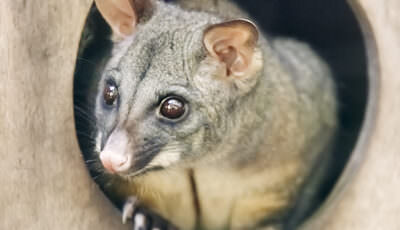
Building a nest box
Time Allocation: 30-40 minutes*
Activity Level: Complex
Introduction
Many of our native animals need tree hollows to shelter and raise their young. Deforestation, competition from introduced animals and urbanisation has resulted in less hollows being available for native wildlife. Nest boxes are a great way to re-create habitat. This learning activity is designed to help educators and young learners successfully complete a nest box project.
Building nest boxes from scratch is a complex activity, using specialised tools and equipment, so we have given some pointers in this activity to make this more simple and achievable. There are many things you will need to consider when making a nest box, so we suggest getting in touch with your local landcare, environmental group or local government before beginning, as many of these organisations hold specialist knowledge about your local animals and can often help with resources and expertise.
*Time allocation is based on having prepared materials and research completed prior to commencing this activity.
Checklist
Instructions
 STEP 1
STEP 1
Prepare
Before you begin, approach your Local Landcare or Environmental Group and Local Government for advice, expertise, materials and support.
Consult these Field Guide Apps to research animals in your area. Select an animal that you would like to attract and research its requirements.
Consult nest box guidelines (see the Educator Notes for more information) to find out more about how to construct a suitable box.
Prepare a safety plan for this activity and seek endorsement from your organisation.
Cut and paint the materials, if you are making the box from scratch.
Many aspects of this activity carry risk, so you may need to mitigate risks by:
- Purchasing pre-cut, flat-pack nesting boxes
- Purchasing complete, pre-made boxes
 STEP 2
STEP 2
Animal Investigation
Explain to the children that they are going to be creating habitat.
As a group, investigate an animal that you are building a box for. Introduce the activity sheet and use the sheet to record your notes about the animal you are providing habitat for.
Run through your planned build-process, including the safety priorities, tool and equipment use and who will be responsible for how they are used.
Head outside and identify suitable locations for the nest box.
Ask the children if they can identify how the animal that they researched would use the surrounding area.
Use the information learnt during the animal investigation to help guide this discussion
 STEP 3
STEP 3
Build and Install
As a team, assemble the pre-prepared panels of the box.
As the box is assembled, discuss the dimensions of the box and the entry hole size. Ask the children how the dimensions and entry will affect the type of animal you are trying to attract.
Refer to the nest box guidelines and fauna field guide to help determine the height and best location of your nest box. Ask a trained professional to help install the nest box at your selected site.
 STEP 4
STEP 4
Maintain and Monitor
Sometimes introduced birds and wild bees can take over a nest box. Work with the children to decide on a plan in case this occurs. Your local landcare or other community environmental care group will have some suggestions about what to do if this happens. They can also provide suggestions on how to maintain and monitor your nest box. Many groups have access to pole cameras which allow for nonintrusive observation of the animals inside.
Extension Activity
Hollow count: conduct a walk around your local area, taking note of the established habitat trees. How many hollows are present?
Upload your animal data. Once your nest box is being used, identify the animals using it and add your data to the online database, the Atlas of Living Australia.